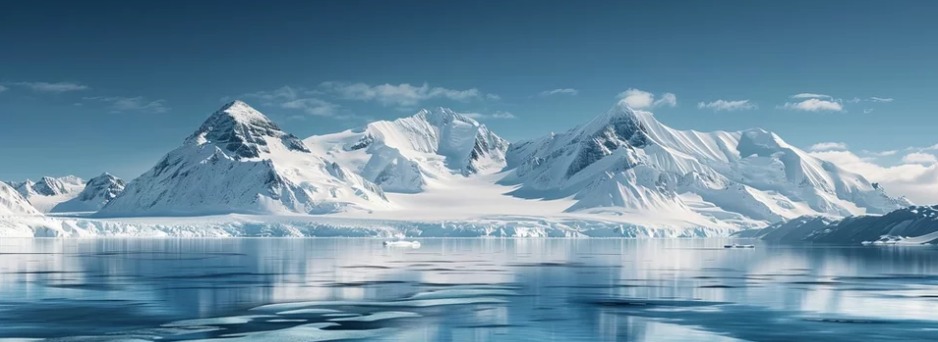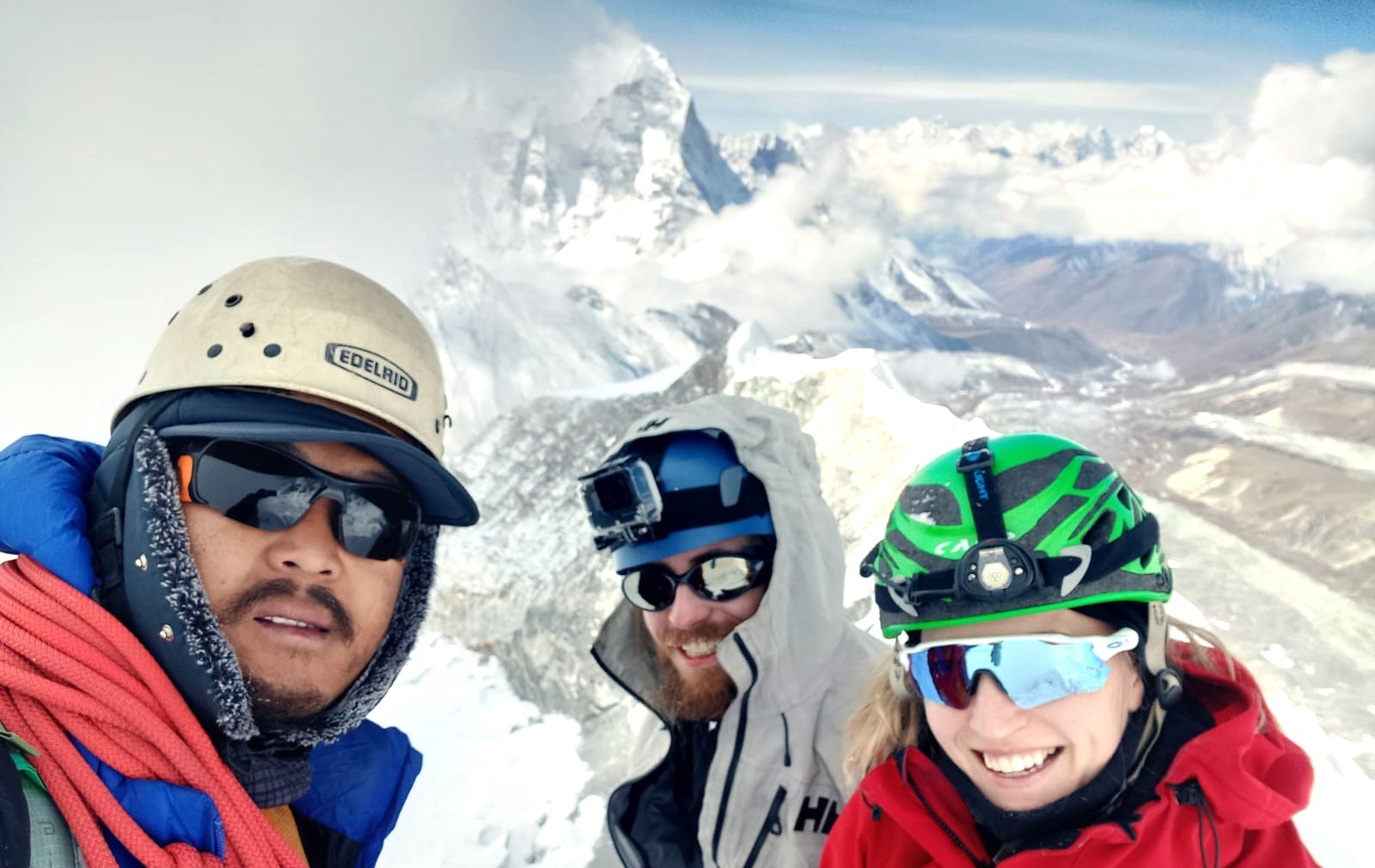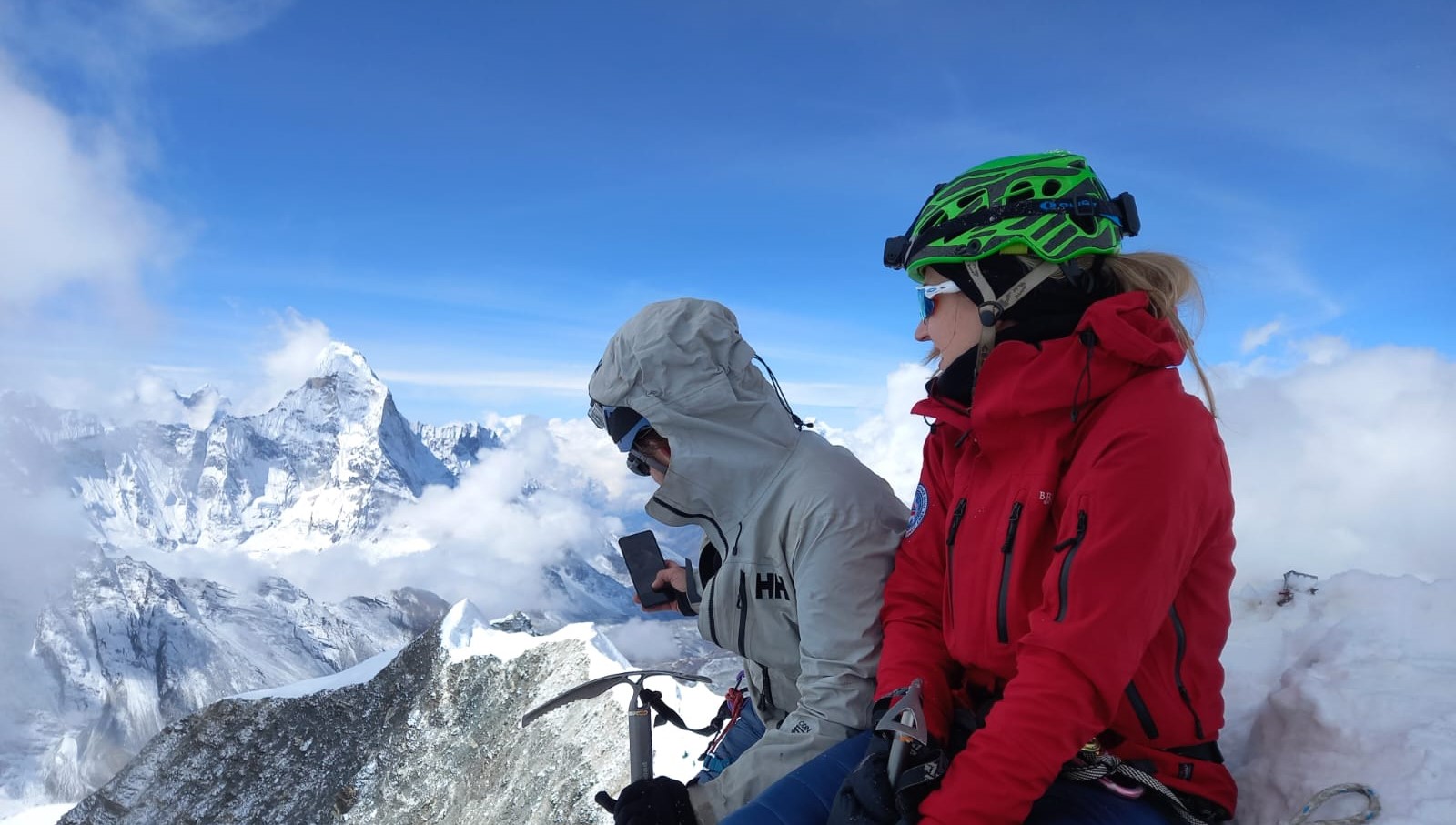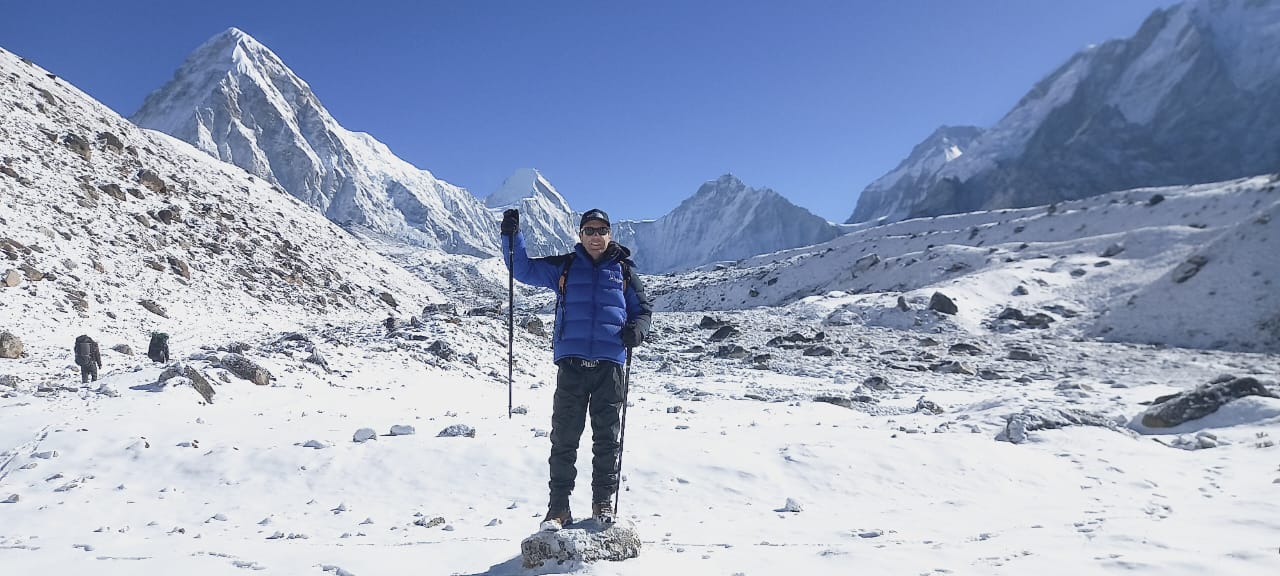26th August, 2025

May 01, 2024
Island Peak Climbing In June
- Island Peak Climbing with EBC Trek in June
- Best Time to Climb Island Peak in Nepal
- Why Island Peak in June?
- Everest and Island Peak Climbing During June
- Weather Pattern on Everest and Island Peak During High Seasons
- Helpful Tips for Planning Everest and Island Peak Expedition
- Understanding the Risk of Altitude Sickness and Preventions
- Hydration and Nutrition Monitoring
- Island Peak Climbing Cost
- Attractions of Island Peak Summit
- Island Peak Climb Difficulty Level
- Final Say
- Island Peak Climbing Packages
Climbing Island Peak in June presents a compelling challenge amidst the stunning backdrop of the Everest region in Nepal. Standing at 6,189 meters (20,305 feet), Island Peak, also known as Imja Tse, offers a blend of technical climbing and breathtaking Himalayan scenery. June marks the onset of the monsoon season in Nepal, bringing warmer temperatures and occasional rain showers to the region. Despite these conditions, June remains a viable time for climbers seeking a unique adventure.
June's weather in the Everest region varies, with lower elevations experiencing milder temperatures and lush greenery due to increased rainfall. At higher altitudes, climbers encounter fluctuating weather patterns, including cloud cover and precipitation, which can impact visibility and trail conditions. Careful planning and flexibility in itinerary are essential to capitalize on weather windows for successful summit attempts.
Climbing Island Peak in June requires thorough preparation to overcome weather-related challenges. Heavy rainfall can make trails muddy and slippery, necessitating sturdy footwear and waterproof gear. Climbers should be equipped with adequate clothing layers, including insulated jackets, waterproof pants, and gloves to stay warm and dry during the ascent.
Technical climbing skills are essential for navigating steep sections, crevassed glaciers, and icy slopes using ropes, crampons, ice axes, and harnesses. Physical fitness and altitude acclimatization are critical, with climbers advised to incorporate gradual ascents and rest days to mitigate the risk of altitude sickness.

ISLAND PEAK CLIMBING
Sherpa Expedition & Trekking (Est.1977) are pleased to announce FOR ADVENTURERS the most awesome, exhilarating & unforgettable climbing and treks on offer anywhere today!...
Despite the weather challenges, June offers unique advantages for climbers. The monsoon season results in fewer crowds on the trails and at base camps, providing a quieter and more serene trekking experience amidst the pristine Himalayan landscapes. The lush vegetation and blooming wildflowers add a vibrant contrast to the snow-capped peaks, enhancing the natural beauty of the surroundings.
Beyond the physical demands, climbing Island Peak in June allows climbers to immerse themselves in Sherpa culture and traditions. Trekking through picturesque villages such as Namche Bazaar, Pangboche, and Dingboche offers opportunities to interact with local communities and visit Buddhist monasteries along the route. These cultural encounters enrich the journey, providing insights into Sherpa heritage amidst the towering Himalayan peaks.
Climbing Island Peak in June is a challenging yet rewarding adventure for mountaineers drawn to the allure of the Everest region's natural beauty and technical climbing opportunities. With careful preparation, including physical conditioning, technical proficiency, and a flexible approach to weather conditions, climbers can successfully summit Island Peak and experience the exhilaration of standing atop one of Nepal's iconic peaks. June's quieter trails and vibrant landscapes offer a unique perspective on the Himalayas, ensuring a memorable and enriching mountaineering experience for those seeking adventure in Nepal's high-altitude wilderness.
Island Peak Climbing with EBC Trek in June
Combining an Island Peak climb with the Everest Base Camp (EBC) trek in June offers a comprehensive Himalayan adventure amidst the onset of the monsoon season. Starting from Lukla, the trek passes through Sherpa villages like Namche Bazaar and Tengboche, providing cultural insights and breathtaking mountain views. Climbers branch off towards Island Peak Base Camp, where they prepare for the technical ascent. June's warmer temperatures and occasional rain showers create challenging yet manageable conditions for both trekking and climbing, requiring careful gear selection and weather monitoring. Despite the weather challenges, June allows for a quieter experience on the trails, with lush landscapes and blooming flora adding to the scenic beauty.
Best Time to Climb Island Peak in Nepal
The best time to climb Island Peak in Nepal is typically during the pre-monsoon (spring) and post-monsoon (autumn) seasons, which fall between March to May and September to November, respectively. These periods offer stable weather conditions, clear skies, and optimal visibility, making them ideal for summit attempts. Climbing during these seasons minimizes the risk of precipitation and ensures safer climbing conditions on the technical sections of the route.

ISLAND PEAK SUMMIT RETURN BY HELICOPTER
Many of us only dream of standing on a tall peak looking down on the world. This is a great climb that will satisfy this desire. Island Peak, also referred to as Imja Tse, is a 6187-meter high peak in...
Why Island Peak in June?
Choosing to climb Island Peak in June provides adventurous climbers with a unique experience amidst the beginning of Nepal's monsoon season. While June presents challenges such as increased rainfall and varying weather patterns, it also offers quieter trails and a more serene atmosphere compared to peak trekking seasons. The lush greenery and blooming wildflowers add a vibrant contrast to the snow-capped peaks, enhancing the natural beauty of the Everest region.
Everest and Island Peak Climbing During June
June sees climbers embarking on both Everest Base Camp and Island Peak expeditions in Nepal. While Everest Base Camp trekking remains popular for its iconic viewpoints and cultural encounters, Island Peak attracts climbers seeking technical challenges and panoramic summit views. June's weather on Everest and Island Peak includes warmer temperatures at lower altitudes, occasional rain showers, and cloud cover at higher elevations, necessitating careful planning and flexible itinerary adjustments.
Weather Pattern on Everest and Island Peak During High Seasons
During the high seasons of spring and autumn, weather patterns on Everest and Island Peak typically feature stable conditions with clear skies and minimal precipitation. Spring offers mild temperatures and blooming rhododendrons, while autumn provides post-monsoon clarity and pleasant trekking weather. Climbers can expect colder temperatures and occasional snowfall at higher altitudes, requiring adequate gear and preparation for varying mountain conditions.
Helpful Tips for Planning Everest and Island Peak Expedition
- Physical Fitness: Prioritize physical conditioning and altitude acclimatization with gradual ascents and rest days.
- Weather Awareness: Monitor weather forecasts and be prepared for changing conditions, including rain showers and cloud cover.
- Gear Selection: Pack waterproof and breathable clothing, sturdy trekking boots, and technical climbing gear (crampons, ice axe, harness).
- Permits and Logistics: Obtain necessary permits (climbing permits, TIMS card) and arrange logistics through a reputable trekking agency.
- Safety Protocols: Engage experienced guides familiar with the terrain and weather patterns, and adhere to safety protocols for mountain climbing.
Climbing Everest and Island Peak in June offers a blend of adventure, cultural immersion, and natural beauty amidst Nepal's Himalayan landscapes, making it a memorable expedition for mountaineering enthusiasts seeking a unique challenge.

ISLAND PEAK EXPEDITION 15 DAYS
Island Peak, also known as Imja Tse, is a popular peak located in the Khumbu region of Nepal. This peak is a part of the Himalayas and stands tall at a height of 6,189 meters above sea level. Island P...
Helpful Tips for Planning Everest and Island Peak Expedition:
Planning an expedition to Everest and Island Peak requires meticulous preparation to ensure a safe and enjoyable journey. Here are essential tips:
- Fitness Preparation: Prioritize physical fitness with cardiovascular exercises and strength training to handle the demands of high-altitude trekking and climbing.
- Acclimatization: Plan a gradual ascent schedule with acclimatization days to allow your body to adjust to increasing altitudes and reduce the risk of altitude sickness.
- Gear and Equipment: Invest in quality trekking and climbing gear, including clothing suitable for varying weather conditions, sturdy trekking boots, and technical equipment like crampons and ice axes.
- Weather Monitoring: Stay informed about weather forecasts and prepare for changing mountain conditions. Flexibility in your itinerary can help capitalize on clear weather windows for summit attempts.
- Permits and Logistics: Obtain necessary permits, such as climbing permits and TIMS cards, and arrange logistics through a reputable trekking agency that provides experienced guides, porters, and support staff.
Understanding the Risk of Altitude Sickness and Preventions
Altitude sickness, or acute mountain sickness (AMS), is a common concern during high-altitude expeditions like Everest and Island Peak. Symptoms include headaches, nausea, dizziness, and fatigue, typically occurring above 2,500 meters (8,000 feet). Prevention strategies include:
- Gradual Ascent: Ascend slowly, allowing time for acclimatization with rest days at higher altitudes.
- Hydration: Drink plenty of fluids, avoiding alcohol and caffeine, to stay hydrated in the dry mountain air.
- Medication: Consider carrying acetazolamide (Diamox) to help prevent and alleviate symptoms of altitude sickness.
- Awareness: Recognize early signs of altitude sickness in yourself and fellow climbers, and descend if symptoms worsen despite preventive measures.
Hydration and Nutrition Monitoring
Maintaining proper hydration and nutrition is crucial during Everest and Island Peak expeditions to support physical performance and altitude acclimatization. Drink at least 3-4 liters of water daily to stay hydrated, adjusting intake based on activity level and climate. Consume balanced meals rich in carbohydrates, proteins, and vitamins to sustain energy levels and aid recovery after strenuous trekking and climbing days.
Island Peak Climbing Cost
The cost of climbing Island Peak varies depending on factors such as the trekking agency, services included, duration of the expedition, and group size. On average, climbers can expect to budget between USD 3,000 to USD 6,000 per person. This typically covers permits, guide and porter services, accommodation, meals, trekking and climbing equipment rental, transportation, and insurance. Additional expenses may include international flights, visas, personal gear purchases, tips, and contingency funds. Choosing a reputable agency ensures safety, quality services, and support throughout the expedition.

ISLAND PEAK EXPEDITION 14 DAYS
Island Peak Expedition is a 14-day adventure tour that takes you to the heart of the Himalayas, where you can witness the beauty of the mountains, valleys, and glaciers. Island Peak, also known as Imj...
Attractions of Island Peak Summit
Summiting Island Peak offers climbers unparalleled panoramic views of the Everest region's iconic peaks, including Everest, Lhotse, and Ama Dablam. The ascent involves technical challenges like glacier crossings and steep ascents, rewarding climbers with a sense of accomplishment and breathtaking scenery. Cultural experiences along the trek, such as visits to Sherpa villages and Buddhist monasteries, enrich the journey, providing insights into local traditions amidst the Himalayan wilderness.
Island Peak Climb Difficulty Level
Island Peak climbing is considered moderately difficult due to its technical sections and high-altitude environment. Climbers must possess basic mountaineering skills and physical fitness to navigate crevassed glaciers, steep icy slopes, and rocky terrain using ropes, crampons, ice axes, and harnesses. The climb demands endurance, mental resilience, and adherence to safety protocols to overcome challenges and achieve the summit successfully. With proper preparation and guidance from experienced climbers, Island Peak offers a rewarding mountaineering experience in Nepal's Himalayas.
Final Say
Embarking on an Everest and Island Peak expedition requires thorough planning, physical conditioning, and awareness of altitude-related risks. By prioritizing acclimatization, hydration, nutrition, and safety, climbers can maximize their chances of summiting Island Peak while enjoying the cultural and scenic wonders of the Everest region. Island Peak's challenges and rewards make it a sought-after destination for mountaineers seeking an unforgettable Himalayan adventure.

ISLAND AND LOBUCHE PEAK CLIMBING
Lobuche and Island Peak combo climbing expedition is a thrilling adventure that offers a unique opportunity to conquer two popular peaks in the Everest region of Nepal. Lobuche Peak (6,119m) and Islan...
Island Peak Climbing Packages
Island Peak Summit Return By Helicopter
Island Peak Expedition 14 Days
Island Peak Expedition 15 Days
Any Questions? Let Us Know.
Recent Posts
17th June, 2025


















